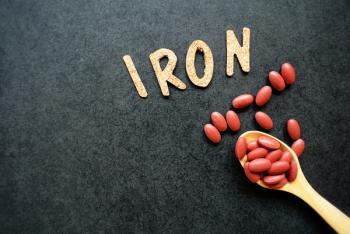
AAGL 2013: Optimal Biopsy Method in Outpatient Hysteroscopy?
In women with abnormal bleeding, obtaining biopsy samples using both Pipelle and grasper forceps is optimal, especially when a diffuse abnormality is encountered, evidence suggests.
The use of both Pipelle and grasper forceps to obtain biopsy material in women with abnormal bleeding is optimal, according to study findings presented last month at the AAGL’s 42nd Global Congress on Minimally Invasive Gynecology. The meeting was held November 10-14, 2013, just outside of Washington, DC, in National Harbor, Maryland.
In a retrospective chart review, Drs. Colette White and David J. Morgan of the department of obstetrics and gynecology of Antrim Area Hospital, Antrim, United Kingdom, examined the histopathology reports of 43 women who had some form of abnormal bleeding. All participants underwent transvaginal ultrasound scanning followed by outpatient vaginoscopic hysteroscopy (Storz 12-degree rigid hysteroscope with 5 French operating channel) and biopsy. Drs. White and Morgan sought to determine whether using a Pipelle forceps or a grasper forceps resulted in a more optimal tissue sample for biopsy.
The mean age of the women studied was 59 years (range, 26 to 92 years); 31 women had postmenopausal bleeding, and 12 women had abnormal menstrual bleeding. Tissue samples were collected using grasper forceps in 32 women and Pipelle forceps in 11 women. In 5 women, both methods of biopsy were used.
Although Pipelle samples (n=11) resulted in significantly larger tissue samples (P=0.006) than grasper samples (n=32), the Pipelle samples also were much more likely to be deemed insufficient for diagnosis than grasper samples (43% vs 16%, respectively). When both methods of biopsy were used, none of the samples were considered insufficient for diagnosis. In fact, hyperplasia or carcinoma was diagnosed in 4 patients, all 4 of whom had biopsy samples taken with both methods.
“Despite the larger tissue yield with Pipelle biopsy, this does not equate to a lower insufficient-for-diagnosis outcome, suggesting that targeted biopsy may be of higher quality,” Drs. White and Morgan concluded. Based on their results, they suggested that using both Pipelle and grasper methods of biopsy during hysteroscopy may be optimal, especially when a diffuse abnormality is encountered during the procedure.
These results were presented Thursday, November 14, 2013, by Colette White, MB BCh.
Newsletter
Get the latest clinical updates, case studies, and expert commentary in obstetric and gynecologic care. Sign up now to stay informed.










